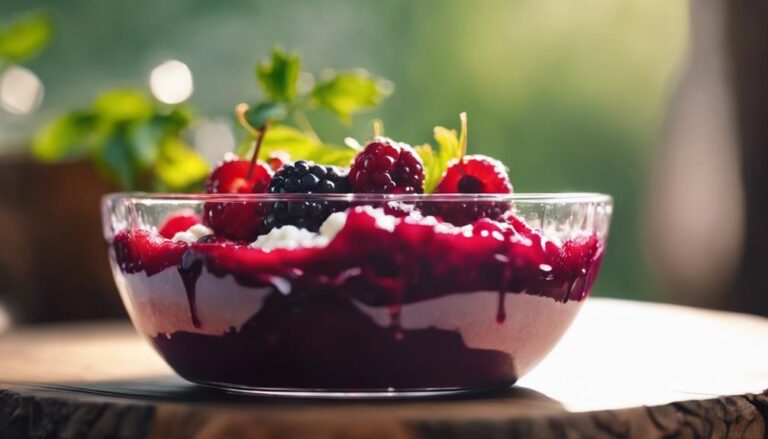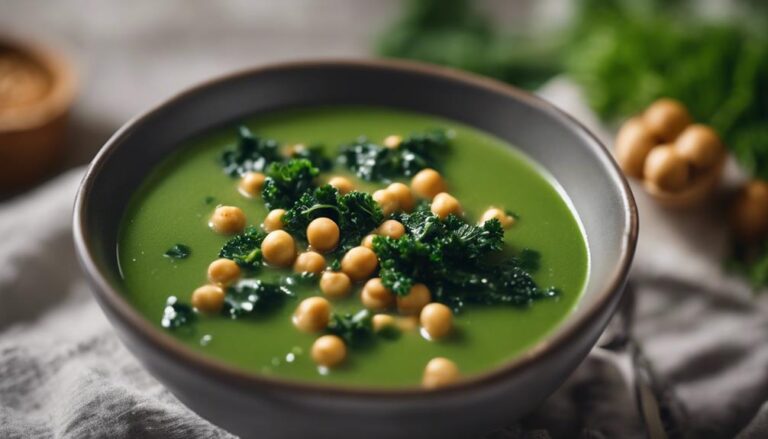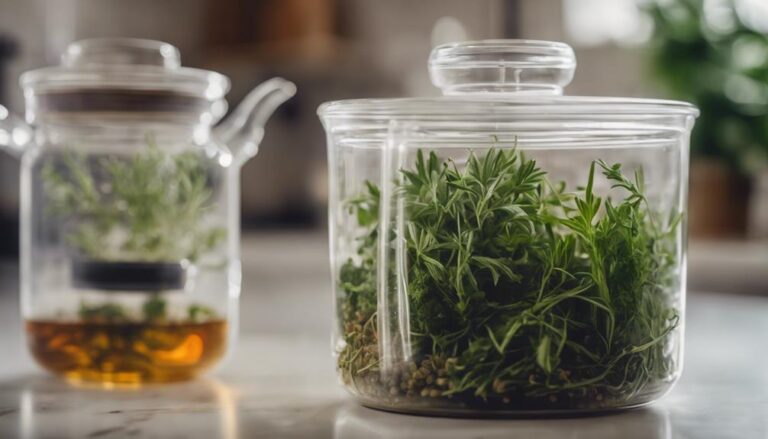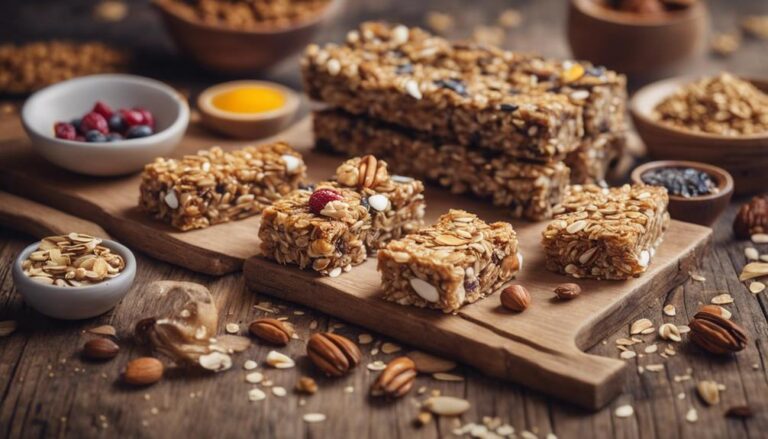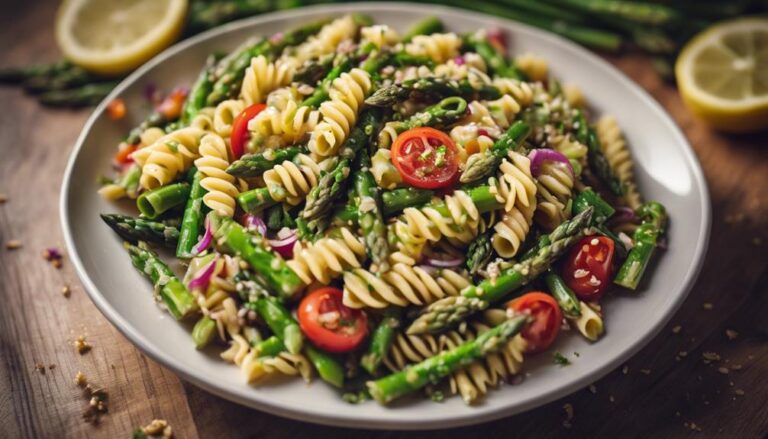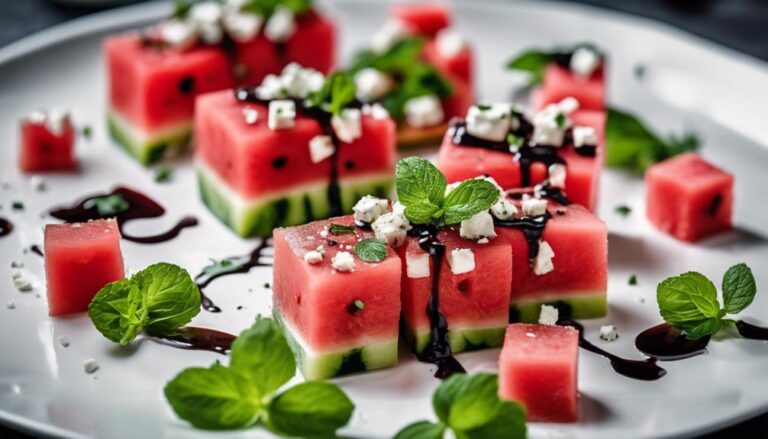Fueling Longevity: Mastering a Healthy Diet With Sous Vide for Optimal Nutrition and Disease Prevention
To fuel longevity, master a healthy diet with sous vide for ideal nutrition and disease prevention. Sous vide involves vacuum-sealing food and cooking it in a precise water bath, retaining essential nutrients often lost in traditional methods. This cooking technique preserves antioxidants, water-soluble vitamins, and enhances the nutritional value of veggies. By promoting precise cooking temperatures and whole food consumption, sous vide reduces disease risks and supports a healthier lifestyle. Elevate your meals with tender textures, intensified flavors, and extended ingredient shelf life. Sous vide is a tool for enhancing nutrition, taste, and safety in your culinary journey.
What You Will Learn Here
- Sous Vide cooking preserves nutrients for optimal health.
- Precise temperature control minimizes disease risks.
- Enhances flavors and textures while retaining nutrients.
- Supports longevity with nutrient-dense, well-cooked meals.
- Sous Vide aids in achieving a balanced, healthy diet.
Understanding Sous Vide Cooking
To understand sous vide cooking, grasp the technique of vacuum-sealing food in bags and cooking it in a precise water bath. Cooking sous vide involves immersing sealed ingredients in a water bath at controlled temperatures, ensuring precise cooking results. This method allows for temperature control with an accuracy that surpasses traditional cooking techniques. By cooking in a water bath, heat is evenly distributed, guaranteeing that your food is cooked consistently from edge to center.
One of the significant advantages of cooking sous vide is the retention of nutrients. Because the food is sealed in a bag during the cooking process, vitamins and minerals that are often lost through traditional cooking methods are preserved. This results in meals that not only taste delicious but also maintain their nutritional value. Additionally, the precise control of temperature in sous vide cooking minimizes the risk of overcooking, leaving you with tender and flavorful dishes every time.
The water bath in sous vide cooking acts as a gentle cooking environment, ensuring that the food retains its natural juices and flavors. This method of cooking isn't only safe but also efficient in pasteurizing food at specific temperatures, reducing the chance of foodborne illnesses. With sous vide, you can achieve restaurant-quality results in the comfort of your own kitchen, making it a popular choice for both home cooks and professional chefs alike.
Nutritional Benefits of Sous Vide
Enhancing the nutritional value of your meals, sous vide cooking retains a higher percentage of essential nutrients compared to traditional cooking methods. This cooking method involves vacuum-sealing food in a bag and cooking it in a water bath at a controlled temperature, ensuring that vitamins and minerals aren't lost during the cooking process.
Here are some key nutritional benefits of sous vide:
- Preservation of Antioxidants: The slow and precise cooking process of sous vide helps preserve antioxidants in foods, which are essential for combating oxidative stress and promoting overall health.
- Retention of Water-Soluble Vitamins: Sous vide cooking minimizes the loss of water-soluble vitamins like vitamin C and B vitamins, ensuring that your meals are packed with essential nutrients.
- Enhanced Nutritional Value of Vegetables: When vegetables are cooked sous vide, carotenoids and flavonoids are enhanced, increasing their nutritional value and providing you with a nutrient-dense option for healthy meals.
Minimizing Disease Risk With Sous Vide
Minimizing disease risk is a key advantage of sous vide cooking due to its precise control of cooking temperatures, ensuring food safety and promoting ideal nutrition for disease prevention. When you cook using sous vide, the low temperatures are carefully regulated, reducing the risk of foodborne illnesses. The slow cooking process helps to retain essential nutrients in your food, supporting ideal nutrition to prevent diseases. By eliminating the need for excessive fats and oils in your cooking, sous vide enables you to maintain a healthier diet overall.
Furthermore, sous vide keeps the natural flavors of your ingredients intact, encouraging the consumption of whole foods that are beneficial for disease prevention. The controlled environment of sous vide cooking plays an important role in ensuring food safety by minimizing the chances of harmful bacterial contamination. By utilizing this method, you can greatly lower the risks associated with consuming undercooked or contaminated foods. Embracing sous vide as a cooking technique not only enhances the taste and texture of your meals but also serves as a powerful tool in safeguarding your health and well-being.
Sous Vide: A Tool for Longevity
Utilizing sous vide cooking as a tool for longevity promotes ideal nutrition and disease prevention through nutrient-dense meals and precise temperature control. Sous vide cooking involves sealing ingredients in a bag and cooking them in a water bath at a precisely controlled temperature. This method offers several benefits that contribute to a healthier lifestyle:
- Preserving Nutrients: Sous vide cooking preserves more nutrients and vitamins in food compared to traditional cooking methods, ensuring you get the most out of your meals.
- Enhanced Flavors: The controlled water temperature in sous vide helps in retaining the natural flavors and textures of ingredients, resulting in perfectly cooked dishes every time.
- Healthier Cooking: Sous vide promotes healthier eating habits by requiring minimal to no added fats for flavorful results, making it an excellent choice for those looking to improve their diet.
Enhancing Food Taste and Texture
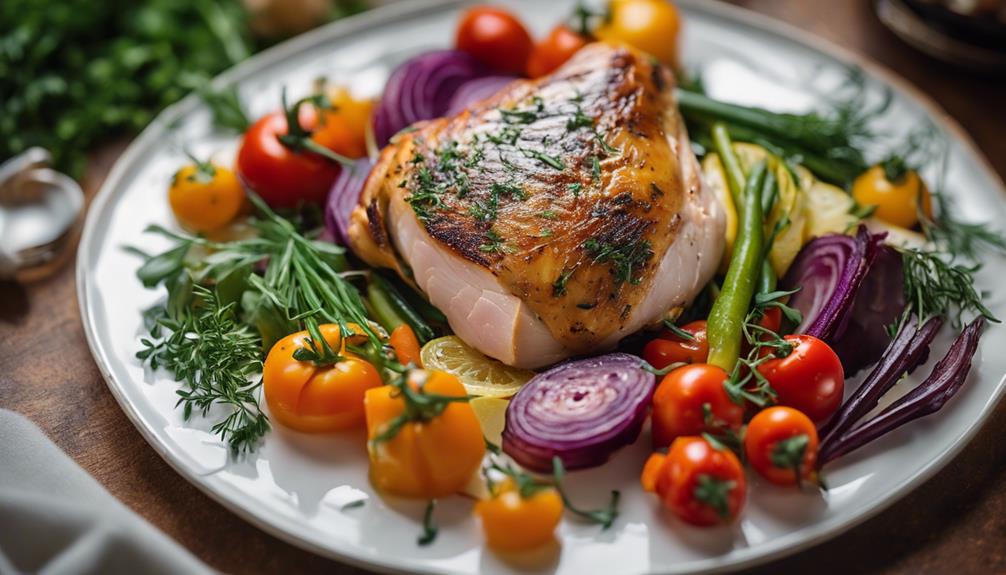
By sealing in natural flavors and juices, sous vide cooking enhances the taste and texture of food effectively. The precise control of water temperature in sous vide guarantees that your meals turn out tender and perfectly cooked every time. Unlike traditional methods that can lead to overcooking or drying out, sous vide retains the texture of food, ensuring a consistent and enjoyable eating experience.
With sous vide, the natural flavors of your ingredients are amplified without the need for excessive oil or seasoning. This method allows the juiciness and tenderness of proteins to be preserved without adding extra fats, resulting in flavorful dishes that are both healthy and delicious. By cooking at precise cooking temperatures below boiling water, sous vide ensures that your proteins remain tender and retain their natural juices, making each bite a delightful experience.
Say goodbye to tough cuts of meat or dry chicken breasts—sous vide is here to revolutionize the way you cook. By embracing this technique, you can elevate the taste and texture of your meals to a whole new level, all while maintaining the nutritional value of your ingredients.
Essential Nutrients Preservation With Sous Vide
Preserving essential nutrients is a key benefit of sous vide cooking, ensuring the best nutritional value in your meals. When using sous vide, nutrients are better preserved compared to traditional cooking methods due to the controlled low-temperature cooking. This preservation method helps maintain the vitamin content in foods, ensuring you get the most out of your ingredients.
Here are three key points to bear in mind regarding essential nutrient preservation with sous vide:
- Nutrient Retention: Sous vide cooking preserves more nutrients like carotenoids and phenolic compounds in vegetables compared to traditional cooking methods.
- Vitamin Content: The controlled low-temperature cooking of sous vide helps retain vitamin content in foods, ensuring the highest nutritional value in your meals.
- Bioactive Compounds: Vegetables cooked sous vide have higher levels of bioactive compounds, contributing to a healthier diet rich in essential nutrients.
Food Safety and Sous Vide
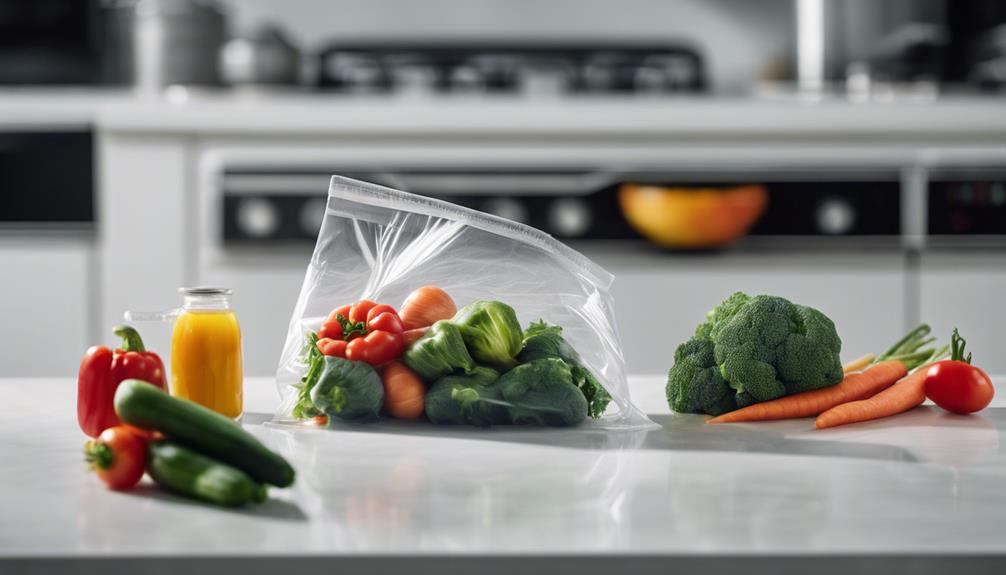
Ensuring food safety with sous vide cooking involves precise temperature control to eliminate harmful bacteria and reduce the risk of foodborne illnesses. Sous vide cooking relies on cooking food in sealed pouches immersed in water at specific temperatures. This method effectively pasteurizes foods like poultry and eggs, making them safer to consume. By maintaining precise temperatures for extended periods, sous vide minimizes the risk of microbial contamination, ensuring the safety of your meals.
The slow and controlled cooking process in sous vide helps eliminate harmful bacteria such as salmonella, creating a safe environment for food preparation. Properly sealed pouches, followed by chilling, prevent bacterial growth, safeguarding delicate foods. Even though sous vide is a gentle cooking technique, it's highly effective in reducing the risk of foodborne illnesses due to its meticulous temperature management.
Sous vide cooking acts as a safety net for various ingredients, promoting excellent food safety practices for disease prevention. By utilizing this method, you can enjoy delicious and nutritious meals while minimizing the chances of food contamination. Embrace sous vide cooking as a reliable tool in your kitchen to prioritize food safety and well-being.
Extending Shelf Life of Ingredients
To enhance the longevity of ingredients, consider utilizing sous vide cooking to seal them in airtight pouches, preventing exposure to air and bacteria. This technique not only helps in preserving the quality and freshness of your food but also extends the shelf life of various ingredients. Here are some benefits of using sous vide to prolong the life of your cooking elements:
- Minimizing Food Waste: By vacuum sealing ingredients before cooking sous vide, you can guarantee that they retain their freshness and quality for longer periods, reducing the likelihood of having to throw out unused portions.
- Extended Storage: Ingredients cooked using the sous vide method can be conveniently stored in either the refrigerator or freezer for extended periods without compromising their taste or texture, allowing for better meal planning and reducing spoilage.
- Inhibiting Microbial Growth: The controlled cooking environment of sous vide inhibits the growth of harmful bacteria, further safeguarding the shelf life of your ingredients and maintaining their safety for consumption.
Promoting Health With Sous Vide
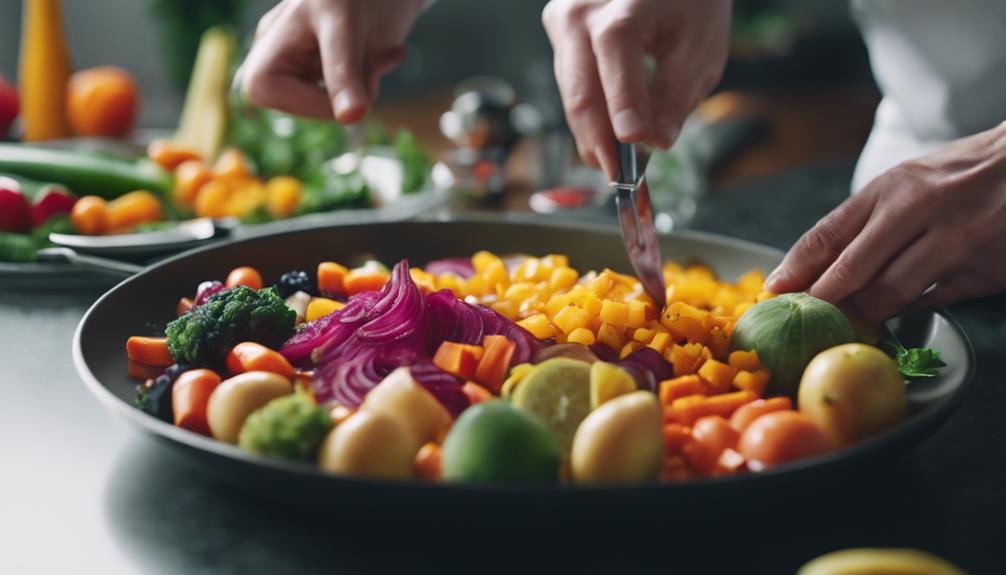
Enhance your well-being and nutrition by incorporating sous vide cooking techniques to promote a healthier diet. Sous vide cooking retains more nutrients and vitamins in your food compared to traditional methods. The precise temperature control of sous vide promotes easier digestion of most foods, contributing to better nutrient absorption and overall gut health.
Not only does sous vide cooking preserve essential nutrients, but it also encourages a youthful appearance and strong joints due to its nutrient retention properties. Collagen obtained from sous vide preparation can contribute to glowing skin and further support gut health, offering both aesthetic and internal health benefits.
Moreover, sous vide allows for safe and efficient preparation of larger quantities of healthy meals. By minimizing the need for additional fats, you can enjoy delicious dishes while maintaining a balanced and nutrient-rich diet. This method of cooking isn't only beneficial for your health but also convenient for meal prep, making it easier to stay on track with your wellness goals.
Sous Vide for Balanced Diet
Utilizing sous vide cooking techniques can play a key role in maintaining a balanced diet rich in nutrients and flavors. This method offers a unique approach to food preparation that not only enhances taste but also preserves essential vitamins and minerals that contribute to your overall well-being.
Here are three key benefits of incorporating sous vide into your diet:
- Nutrient Retention: Sous vide cooking helps retain more nutrients and vitamins in your food compared to traditional cooking methods. The precise temperature control guarantees that essential nutrients are preserved, giving you a healthier option for your meals.
- Flavor Preservation: By sealing in flavors and nutrients, sous vide cooking promotes healthier eating habits. You can enjoy delicious meals without compromising on the nutritional value of your food.
- Healthy Eating Habits: The slow-cooking nature of sous vide helps maintain the nutritional value of ingredients, making it easier for you to uphold a balanced and healthy diet. With sous vide, you can prepare nutrient-rich meals that support your overall health goals.
Incorporating sous vide cooking into your meal routine can have a significant impact on your diet by enhancing nutrient retention, preserving flavors, and promoting healthier eating habits.
Using Sous Vide for Meal Preparation
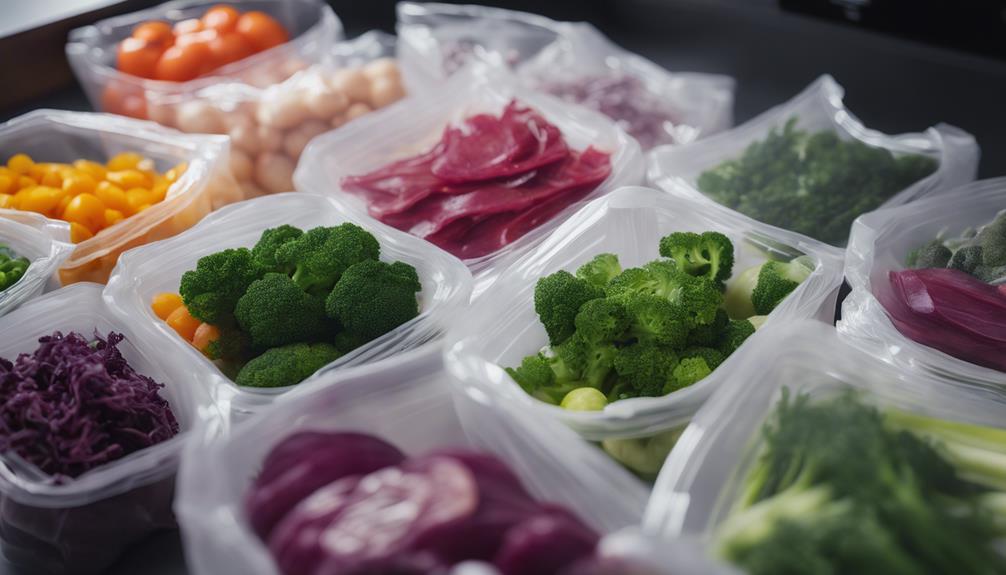
Shifting from the previous discussion on sous vide's role in maintaining a balanced diet, let's explore how you can enhance your meal preparation using sous vide techniques. By incorporating sous vide cooking into your routine, you can transform the way you approach cooking, focusing on both flavor and nutritional quality.
Sous vide meal prep excels at retaining moisture and flavor in your dishes, ensuring excellent taste and texture with every bite. The precise cooking temperatures it offers make it ideal for batch cooking and portioning meals, allowing you to prepare ahead of time with confidence. Additionally, when it comes to reheating leftovers, sous vide shines by preventing food from drying out, reducing waste, and preserving the freshness of your meals.
Examining successful meal prep strategies like David Richman's, you can see the benefits of quadrupling recipes, utilizing various cooking methods alongside sous vide, and even freezing meals for extended periods. This method not only saves time but also provides a wide array of proteins, veggies, and grains, promoting healthier eating habits and reducing the reliance on processed snacks. With sous vide, meal preparation becomes a seamless and efficient process, offering you a convenient way to enjoy delicious, nutrient-rich meals without the hassle.
Case Studies: Sous Vide Success Stories
Incorporating sous vide cooking has transformed the health journeys of numerous individuals, showcasing remarkable success stories in optimizing nutrition and well-being. These individuals have experienced significant improvements in their overall health and vitality through the following sous vide success stories:
- Enhanced Nutrient Absorption: By cooking foods at precise temperatures for extended periods, individuals have reported better absorption of essential nutrients, leading to increased energy levels and improved health outcomes.
- Disease Prevention: Several individuals who've adopted sous vide cooking have shared stories of reduced inflammation, lowered cholesterol levels, and better management of chronic conditions, demonstrating the potential of this cooking technique in preventing diseases and promoting longevity.
- Weight Management: Through the controlled cooking environment of sous vide, individuals have found success in managing their weight more effectively by cooking lean proteins and vegetables with minimal added fats, resulting in healthier body composition and improved overall well-being.
These real-life examples highlight the positive impact that sous vide cooking can have on one's health journey, showing that mastering this technique can lead to tangible benefits in optimizing nutrition, preventing diseases, and achieving long-term well-being.
Frequently Asked Questions
How Healthy Is Sous Vide Cooking?
Sous-vide cooking provides a healthy option for your meals. It maintains more nutrients compared to traditional methods, supporting digestion and promoting gut health.
With precise temperature control, it guarantees safety with ingredients like poultry. This method eliminates risks of foodborne illnesses like salmonella.
Additionally, sous vide cooking uses minimal to no extra fats, making it a healthier choice for you. Enjoy delicious, nutritious meals with this technique for a balanced diet and overall well-being.
Do You Need a HACCP Plan for Sous Vide?
Yes, you need a HACCP plan for sous vide cooking to guarantee food safety. This plan helps identify and control potential hazards in the sous vide process, preventing foodborne illnesses.
Proper implementation, including monitoring and documentation, is essential for safe practices. Following a HACCP plan is a regulatory requirement in many areas to maintain standards.
Make sure to establish and adhere to this plan for a safe sous vide cooking experience.
What Are the Benefits of Sous Vide Vegetables?
When cooking sous vide vegetables, you're in for a treat. This method retains more nutrients and phytochemicals than traditional cooking. Plus, sous vide dissolves pectin in cell walls, making veggies tender and flavorful. Carotenoid levels can even increase, boosting their nutritional value.
Your veggies will keep their color, texture, and quality longer with sous vide. Safety can be further boosted by using bio-preservatives like rosemary essential oil. Enjoy healthier, tastier veggies with this technique!
Is Sous Vide Chicken Healthy?
Sous vide chicken is a healthy option for you. This cooking method maintains more nutrients and vitamins, thanks to its precise process. It requires no extra fat, making it a smart choice for a healthier meal. Easy on the digestion, sous vide chicken suits those with digestive issues.
Controlled temperatures guarantee chicken safety, avoiding foodborne illnesses. With sous vide, you get juicy, flavorful meat without needing too much oil or heavy seasoning.
Conclusion
To sum up, mastering sous vide cooking can be a valuable tool for promoting longevity and vitality through a healthy diet. By utilizing this innovative technique, you can enhance the nutritional content of your meals, reduce disease risk, and improve overall health.
With its ability to preserve nutrients and elevate flavors, sous vide offers a practical and effective way to fuel your body with balanced and nutritious meals.
Start your journey towards a healthier lifestyle today with sous vide cooking.





